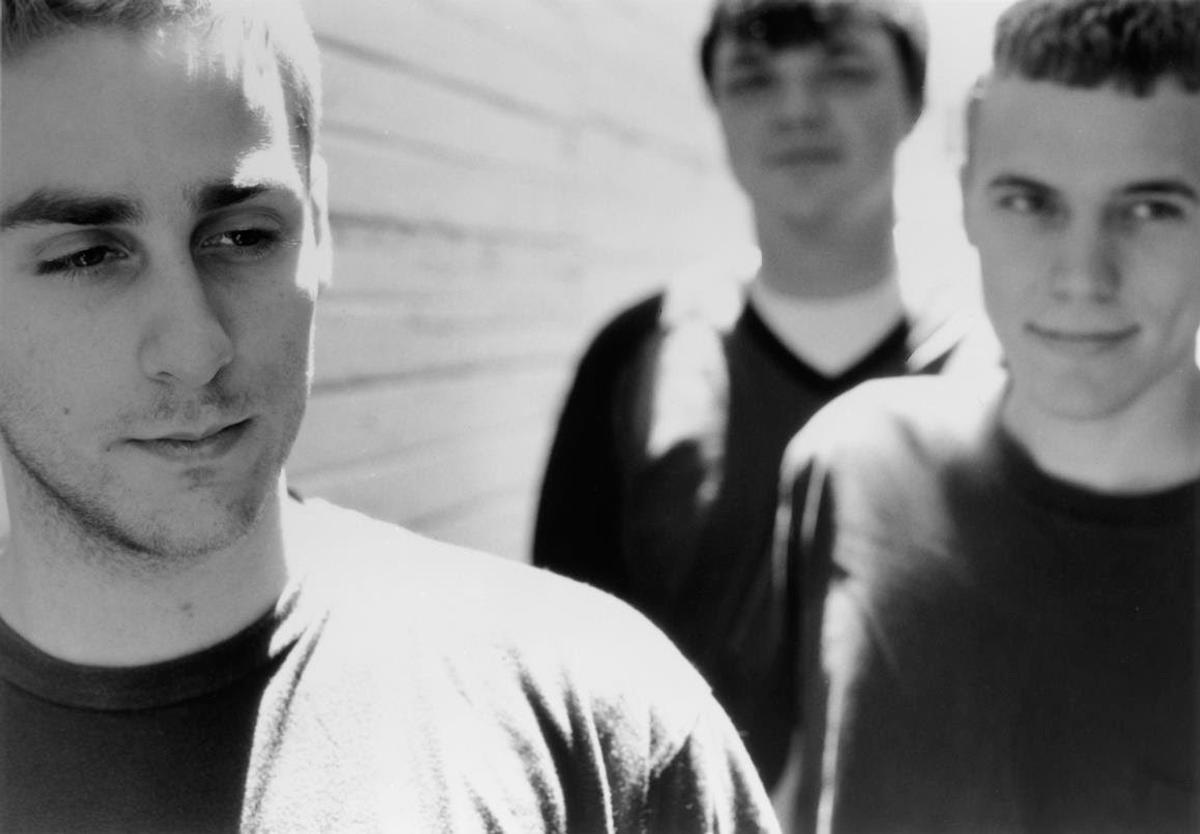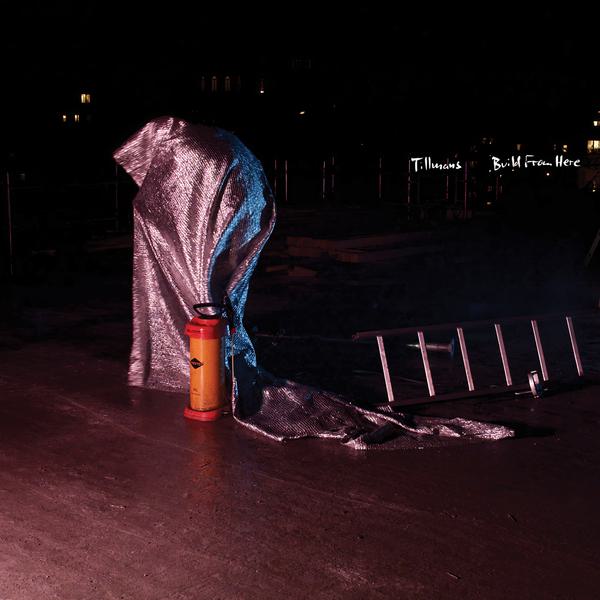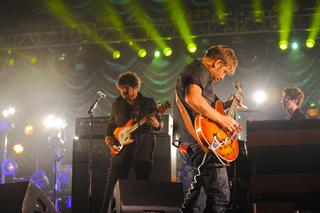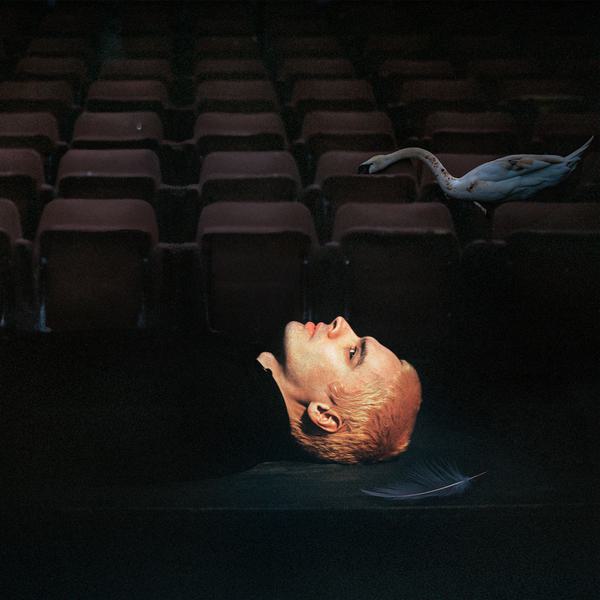
Not So Emotional?: American Football's Mike Kinsella on reflection, reminiscence and resurrection
“I think enough time had passed that I’d forgotten why I kept saying no.”
It was probably five or six years ago that I had Last.fm (remember that?) open in another tab, and was listening to one of the ‘radio stations’ they’d comprise, of similar artists to the one you’d selected; on this occasion, I suspect it was one of the real titans of U.S. ‘college rock’, like Death Cab for Cutie or Modest Mouse. You’d tend to hear a lot of stuff you already knew, and a few tracks that you’d hate; the longer you listened, the more tenuous the connections between the initial artist and the ones the computer picked would become. Occasionally, though, you’d stumble across a real gem.
That afternoon, the sound of really melodic, overlapping guitar lines began to drift through the speakers; they had that real nineties sound, that characterised so many of those American college bands. That was enough to pique my interest, and then a solitary trumpet started fading in over the top; like the guitars, it was drenched in melancholy, but it also seemed to fit with the percussion, which was a little off-kilter - kind of jazzy. I waited for vocals, but they didn’t come, and the song was over pretty snappily; my list of ‘scrobbles’ revealed it to be “The One with the Wurlitzer”, by American Football.
Once I’d gotten over being completely thrown by the name - they sounded so obviously American that, you know, shouldn’t they just be Football? - I tracked down their one and only record, and it quickly became an all-time favourite. It isn’t really much like anything else I’ve ever heard. It’s like a Frankenstein’s monster of ideas that shouldn’t work together, but do so in glorious fashion. The lyrics - emotional, confessional and utterly unguarded - explain why they’ve so often been pigeonholed as part of that emo scene of the nineties (think Sunny Day Real Estate, or Texas Is the Reason) but unlike those bands, they’re not noisy, and they don’t sound outwardly angry. Everything simmers; from the consistently unusual time signatures to the fabulously intricate guitars, it seems to be less a record and more a carefully-crafted mood piece. Even the artwork - a shot looking up at an unmistakably American suburban house at night - taps neatly into the atmosphere that permeates every aspect of the album.
The trio - comprising Mike Kinsella, Steve Lamos and Steve Holmes - split in 2000, as their college studies drew to a close; the sense that they might have been a little young to truly grasp what they’d created is one of a few things about American Football that makes me think of it as a softer, mellower cousin to Slint’s Spiderland. When I first pitched this interview, a couple of months ago, a deluxe reissue of the album had been announced to mark fifteen years since its release, but I’d failed to notice the countdown clock that had popped up on their website; by the time I actually speak to Kinsella, American Football have announced their first live dates this side of the millennium.
“Polyvinyl had been wanting to reissue the record for a while,” says Kinsella, “and so we’d all been communicating a little better; we’d probably spoken more in the past six months to a year than we have in the fourteen years before that. It really just seemed to fall into place quite nicely this time. We’ve had offers down the years and we were always pretty quick to dismiss them, but this time it just sounded more fun than before.”
One of the perennial stumbling blocks, as far as a reunion was concerned, was the fact that whilst Kinsella has remained an active musician - primarily with his solo project Owen, as well as Owls, Joan of Arc and Their / They’re / There - Lamos and Holmes have both been living more conventional lives. “We recorded the album literally in the last four days before two out of the three of us were due to move back home from school,” Kinsella recalls. “I was roommates with our guitar player, Steve, and we both moved back to the Chicago area, and kept in touch initially. Actually, both Steves were in another band for a little while, within a year or two of American Football; they were called The Geese, and they played some shows, but I’m not sure if they ever released anything. Anyway, Steve Lamos - our drummer - ended up moving out to Colorado; he’s a professor out there now, and he’s been there about ten years or so. There would always be emails back and forth every now and then, but we haven’t really seen each other that often.”
From a business standpoint, you could probably forgive the trio for being lax on the communication front; it was only recently that Kinsella began to realise that the album they made together had come to reach an audience that expanded beyond the rest of his work. “Obviously, I’ve been sorting trudging along this past fifteen years,” he laughs, “I mean, I’ve been touring less and less recently, but I’ve always put out records. There’s always been people asking about American Football, but there was usually a clear crossover between people who would be interested in that and people who would come out to an Owen show. The past couple of years, though, I could tell it was starting to become a bigger thing, like it was taking off a little. I think there might have been a kind of resurgence of the sort of scene that we came to be identified with, because people seem to be finding that record independently of me or the music I’ve been making since. It definitely feels like a different thing now.”
There are now four live dates in the American Football diary, but their announcement feels like the culmination of a gradual increase in activity; the machine seems to have been slowly whirring back to life for a while now, ever since Polyvinyl teased the emergence of ‘lost’ songs back in 2012. Whether it means that the band are actually active again, though, is another matter entirely. “I don’t think so. There hasn’t been any talk of writing new material, or anything like that. We just set up these four shows, and they were pretty tough to schedule; just logistically with each of us having at least two kids, and having normal lives to live. It’s not like we can ever do a proper tour or anything. We thought we’d book something in Champaign, Illinois, because that’s where we started out and played the most, and then it seemed like New York would be fun, too. That turned into multiple shows, but I think that’s it. We’s like to hit the west coast, eventually - since we’re going to learn the songs anyway - and then maybe a Chicago show, but putting it all together has been so difficult that it kind of is what it is right now.”
The deluxe reissue’s second disc has been crammed with pretty much every remaining recorded scrap of American Football’s existence; there’s demos, cuts from practice sessions, live tracks and a previously-unreleased song, ‘The 7s’. It was Lamos, though, who’d kept hold of most of the material, with Kinsella admitting to having had limited input. “To be honest, I wasn’t too involved with sifting through any of that stuff. I’ve been pretty busy doing my current projects, so I didn’t really put much time into it, and I didn’t have much to offer as far as old recordings went. It was just that Polyvinyl were interested in putting it out, so that was cool, and then it was cooler still that there was actually a real market for it. The only real way in which that influenced the decision to play shows was that it got us all talking again, and provided a kind of practical impetus to realising, “hey, maybe we can do this and actually make it fun, if we do it within our own parameters.””
I’d often wondered if the lyrics on American Football were a factor in them having been seemingly consigned to history; they’re so emotionally intense, and utterly forthright, that they might have proved uncomfortable for Kinsella to revisit. “You know, I think that might have contributed to why I didn’t feel like going back to that stuff, in the first few years after the band finished,” he says. “I could still relate to it back then; there was still a rawness to it. I guess, now, it’s probably been long enough that it’s sort of funny to look back on how dramatic I was when I was nineteen. It’s just going to be fun; I don’t think it’ll be too heavy. When we were a band, we didn’t really play in front of anybody, so to actually go out in front of audiences that are excited to see and hear us should be pretty trippy - in a good way.”
I enjoyed seeing how prominent a role the original house artwork took in the process of announcing the reunion, from posts on social media to new merchandise. Like all the best cover shots, it represents the music it prefaces in such an intangible, elusive way; Loveless springs to mind, as do Disintegration and Turn on the Bright Lights. For me, the connection in this instance is that the record sounds like it could only have been made in small-town America, and that photograph looks as if it could only really have been taken in similar surroundings.
“You know, none of us ever actually lived in that house,” Kinsella recalls. “It was friends of friends who lived there when we were all in school together, in Champaign. It’s just a college town, so most of the population is students. The reason we kept going back to it is less to do with how iconic it might have become, and more down to the fact that it’s pretty much one of the only images affiliated with the band. People are still using the same old promo shots, because there’s only, like, three pictures of us all together from 1999; I’m fat-faced, and the other guys are baby-faced. But that cover shot, I always just thought there was something about it that represented living in a kind of insular college town, and that speaks to the sound of the record, I think.”
The key aspect of that sound is the sheer eccentricity of it; for a band so frequently practically written off as ‘emo’, it involved a hugely diverse range of influences, as well as a desire to focus on the musicality of their songwriting in a way that few of their nineties contemporaries managed. Mercurial time signatures, painstakingly complex guitar lines and a vocal delivery from Kinsella that rarely adhered to the pace of either provided the bedrock for one of the most unusual sonic signatures of their generation.
“It’s so funny that we ended up carrying that emo tag, or whatever, for all these years, because it was never something that any of us were interested in. Steve, the drummer, was into a lot of jazz, and me and the other Steve were into punk, and hardcore, and bands that were just sort of spastic and loud. When we played together, though, we were just making all about the interplay between the guitars. The practices ended up involving a lot of counting, and we didn’t have a vocal PA, so the other dudes didn’t know any of the lyrics or the vocal melodies until we actually went out and played a show. For a couple of songs, I don’t think they’d ever even heard the vocals until we went into record.”
“So we definitely came from a pretty scratchy rock scene, and all the living rooms we played were mainly with loud rock bands, but I just remember Steve and I, when we were living together, listening to Steve Reich a lot, and just trying to figure out how we could do something cool with the guitar interplay. We’d both have patterns going on, and we tried to see how we could let them overlap; have one move on while the other stays, then flip it the other way on the next section. So, it was never verse-chorus-verse-chorus; it was always to do with musical cues.
“That’s a funny part of trying to relearn these songs, actually; we had a practice, and we were like, “why the hell did we switch that up there?” None of us could really remember the cues, so it was just a weird case of, “OK, I guess we play this one seven-and-a-half times, and then move on.” At the time, though, somebody must have done something within their pattern to cue us, to lead us on, but I guess that’s lost to history now. The fuzziness of our memories is definitely going to complicate things a little.”
There’s probably a fair few reasons behind the lazy ‘emo’ tag that are easy enough to see the thinking behind; those melodic guitars were a mainstay of that nineties scene, and Kinsella’s unrefined vocals aren’t too far removed from Davey van Bohlen’s, or Garrett Klahn’s. He’s quick to offer up his own interpretation, though; given that there’s tracks on this record by the names of “But the Regrets Are Killing Me” and “I’ll See You When We’re Both Not So Emotional”, it’s probably not a huge stretch to understand where he’s coming from.
“I think we get that because, you know, the lyrics are kind of corny. They’re fairly straightforward, fairly forthright. I guess I was just trying to write like Morrissey, or Robert Smith; I was weaned on that music, so when it came to writing lyrics - and this is still the way it’s often been with Owen, too - that’s just how they came out. It’s not that I’m this totally sad sack dude all the time. Obviously, people from the emo scene gravitate towards that stuff, but musically, it’s totally different; we weren’t a loud band, and we weren’t a fast band. We were part of this little college scene, and nothing more than that.”
Kinsella’s modesty is a recurring theme during our conversation; it might take the sight of three sold-out crowds at Manhattan’s Webster Hall in October to truly bring home to him how much American Football mean to those lucky enough to have stumbled across them. Preparations for the shows are already underway, and as we discuss them, it becomes apparent that it’d be an enormous shame if they weren’t to ultimately encompass a little more of the band’s fanbase.
“When we were first talking about it, over email, the main question was, “wow, can we really do this?” Because, when we used to play shows, we’d take five minutes to tune, and that’s a lot of dead time. Plus, there’s not really any bass on most of the songs, so we figured that we’d have to get a bass player, and write bass parts just to fill the set out, to give it some weight in a big room with a lot of people. We only know twelve or thirteen songs; we’ve joked about playing “Never Meant” to open the show and to close the show, just to pad things out. Beyond that, there’s not going to be some crazy light show or anything; you know how Iron Maiden have that giant Eddie that comes out on stage? Yeah, we probably won’t be doing that kind of thing. We might have some guitar techs, and that’s as spectacular as it’s going to get, I think. We have to make it more like a real band than it was when we were actually a band, and that’s a weird situation to be in, you know?”
The deluxe reissue of American Football is available now via Polyvinyl.
Get the Best Fit take on the week in music direct to your inbox every Friday

Maria Chiara Argirò
Closer

Justice
Hyperdrama

Wolfgang Tillmans
Build From Here





